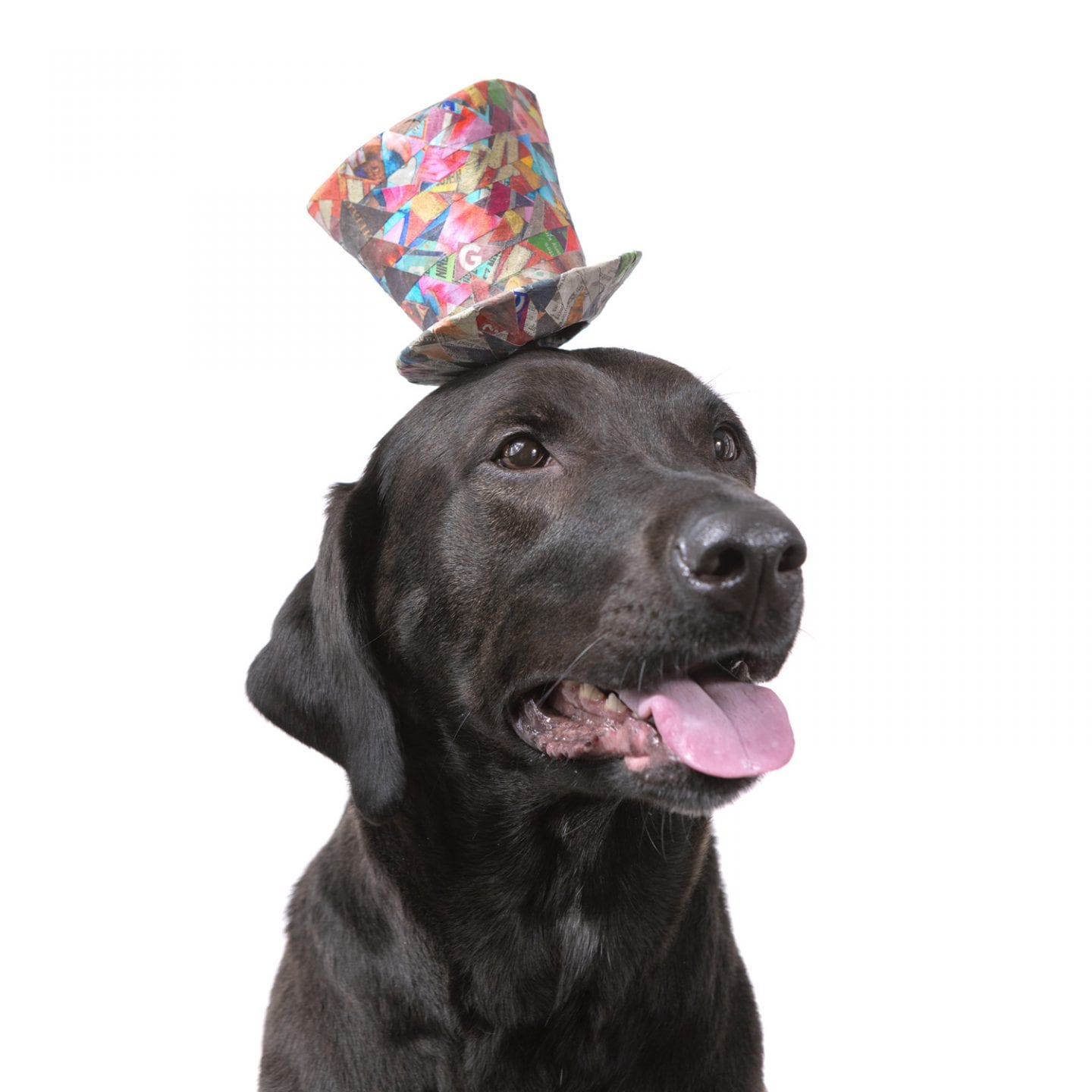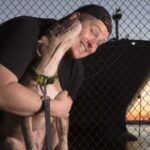Written by J.B. Shepard, a professional pet photographer and founder of the Puptrait Studio.
A lot of dog owners struggle to take pictures of their own dog. A fact we’re thankful for, as no one would hire us to take professional dog photos if it was easy. But you don’t have to be a professional pet photographer to start taking better pictures of your dog.
For today’s dog photo tip we’re not going to discuss the technical aspects of photography, such as camera gear or lighting. Instead, we are going to focus on the communication and behavioral components of pet photography – namely, how to convince your dog to sit still long enough to take a photo.
How do I take better photos of my dog?
The key to great pet photography starts by understanding its greatest dilemma….
To take better dog photos one must get a dog to remain still.
But you can’t make a dog remain still.
Many dogs won’t stay on command and better trained dogs that will stay on command usually look bored when following commands. Neither of those scenarios often result in great pet photos. So, what is an aspiring pet photographer to do?
How do I get my dog to stay still for photos?
If you want to keep your dog from moving, don’t try to force or coax the dog into remaining still. Instead, make it more difficult for your dog to move. This subtle shift in approach can be extremely impactful when you finally sit down to use your camera.
You may not realize it, but most dogs are used to being restrained. Be it by leash, fence or a recall command – restraint is a fundamental aspect of socialized dog life in our cultural. Boundaries are natural for dogs. But there is a limit to this restraint. You never want a dog to feel like it is trapped or cornered – that’s not fun for anyone.
How still do dogs need to be for photos?
Dogs are used to being restrained by boundaries. But most dogs, especially family pets and companion animals, are used to a certain level of freedom within their confines. they have to avoid a short list of misbehaviors, but beyond that they are free to do whatever they want when on leash or in a fenced in yard.
The trick to photographing dogs is to find that fine line. You want to keep a dog where it needs to be to be to remain properly lit and in frame. But you need to keep enough wiggle room within these constraints that your dog feels like it is still free to do and reach what it wants.
One of the best ways to limit your dog’s movements is to have them simply sit on a sturdy box, pedestal or table.
Where do I find modeling boxes for dogs?
Dogs come in a variety of shapes, weights and sizes. To ensure that your dog is comfortable, your box should not tilt or shake. It doesn’t matter what material your box is constructed from, but it is paramount that it is absolutely solid. Your dog should be able to jump from the box without risking it falling, collapsing or making a loud noise.
Modeling stools, common of most photography studios tend to work well. But might be too high for smaller dogs and too flimsy for beefier breeds, such as American Bulldogs, Golden Retrievers, or Pit Bulls. Cube style end tables are another great off the shelf option. But tend to be rather expensive, heavy and difficult to move.
When in doubt, make your own!
The modeling boxes that we use at the Puptrait Studio are of our own design and are constructed from thicker plywood. The surfaces of which were painted white and then dusted with a light coat of sand to provide ample texture and grip. We use 2 different sized modeling boxes; a low and wide (3′ x 3′ x 1′) box for larger breeds and senior dogs, and a taller 2′ x 2′ x 3′ box for small and medium sized dogs.
As we discussed before, make sure that your boxes are bother wide and stable enough to support your dog. You also want to make sure the box is the correct height.
The box should be tall enough that your dog hesitates to step off it, but not so tall that they can’t see the top of the modeling box (if they have to jump up on their own) or more importantly, would risk injuring themselves jumping or falling off.
Your dog and camera prioritize different types of movement
The most restricting factor when it comes to movement and distance in photography is focal distance. Unless you’re using a tilt shift lens (if you don’t know what this is, odds are you’re not using one) focal distance is calculated simply by factoring the distance between your camera lens and your subject. As such, medial and lateral movements (side to side) impact focus at twice the magnitude of distal and proximal movements (near to far). So, when it comes to giving your dog wiggle room, it’s better to allow your dog more side-to-side freedom, adjusting your framing and lighting accordingly.
How do I keep my dog from jumping off the modeling box?
There are two reasons that dogs jump off of boxes. Either they don’t feel safe on the box or there is something off the box that they want to reach.
Making a dog feel safe is a simple task, but one that shouldn’t be rushed or forced. Often just getting a dog onto the modeling box and then focusing their attention elsewhere is enough. Optimally, you want the dog to either forget they’re on the box in the first place (just be careful they don’t fall off).
Keeping your dog’s interests confined to the top of the modeling box is a two step process:
Remove all distractions
First you must minimize distractions, remove anything fun, delicious, loud or moving from the room. This is one of the primary reasons we only allow one dog in the studio at a time. Even bonded dogs tend to distract each other if one is on the ground and the other is not.
Introduce awesomeness
Once you’ve removed all the distractions from the room, it’s time to sweeten the pot. Make the top of the modeling box the best place your dog can imagine being. Reward your dog’s bestest behavior with plenty of treats, pets, affection, and toys. Keeping your dog properly motivated is why pet photography is typically a two person job. Pet photoshoots tend to go much smoother for everyone involved if one person is focused on keeping the dog happy on the box and another person is focused on working the camera.
My dog is still not staying still, what am I doing wrong?
If you followed the steps outlined above and your dog is still not cooperating, try being more patient. Every dog works at their own speed and comfort level. But very few dogs nail a photoshoot on their first try. Expect that your dog is going to move and that you’re going to take a lot of awful photos. With most private pet portrait sessions, we typically expect to spend 1 – 2 hours in studio working with each dog — and we’re pros!
Whatever you do, don’t stress!
If photographing pets is something you’re just getting into, focus on having fun and enjoying the time you’re spending with your dog bonding. Don’t worry about the quality of your dog photos. If you keep trying your dog will only learn to trust you and the camera more. And, over time your skill with a camera will only continue to improve.
How do I get my dog to take pictures?
Buy your dog a camera! It also helps to ask nicely.
Above all – love your dog, have fun and keep learning!
About the author:J.B. Shepard, is a professional pet photographer, dog advocate, and founder of the Puptrait Studio. J.B. lives in Hampden, with his wife and two dogs — George (a Boggle) and Lucky (Jack Russell Terrier).


